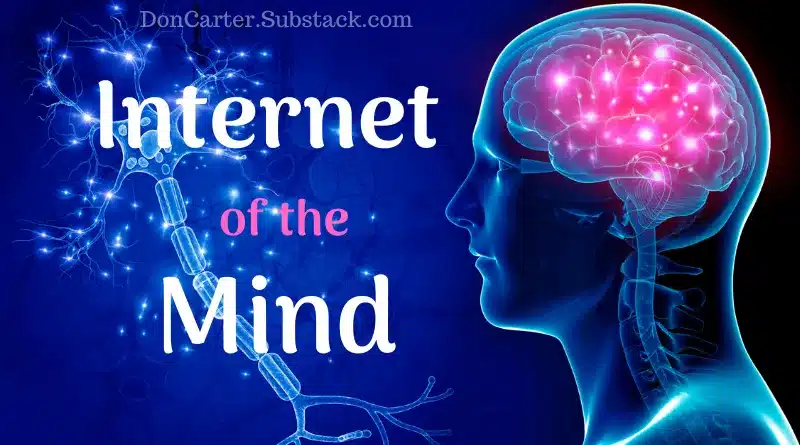
Pattern Matching Updates Subconscious Mind
Pattern Matching Mechanisms – Intensity and Repetition
A little over 100,000 years ago a lone hunter made his way across the wetlands looking for food. It was a beautiful day, the sun was shining, the skies were blue with white, puffy clouds and a gentle breeze was blowing.

As the hunting party walked along it was a beautiful day… the sun was shining… the skies were blue with white, puffy clouds… and a gentle breeze was blowing. Then, off to the left, a bush moved… The hunter’s friends turned around just in time to see him kicking up dust about a hundred yards away… running hard in the opposite direction.
In just one very intense experience, the encounter with the tiger had been “burned into his neurology” as a warning system to avoid getting eaten. All the elements were there – the blue skies… the white puffy clouds… the gentle breeze… the beautiful day… the wetlands… the moving bush. All of these elements joined together in the proper sequence signaled the imminent probability of being eaten by the tiger.
His “Don’t Get Eaten” System instantly and subconsciously received the fear signal (trigger) resulting in a powerful need to find safety – right NOW! This is an example of a mechanism the brain uses in order to learn from experience. It’s called pattern matching (AKA: Classic Conditioning). There are only two ways to “burn a network into the brain” – Intensity and repetition.
Pattern Matching
Every time we have a new significantly intense experience the brain does a database search for similar experiences and stores the new experience in the same category. Pattern matching is the basis for all sorts of phobias and panic disorders such as the saber-toothed tiger example described above… All it takes is one intensely frightening experience with a spider to develop a spider phobia…
- Seeing a spider = freaking out
- Reading the word spider = freaking out
- feeling something on the skin that could be a spider = … well, you get the point.
Pattern matching is also responsible for cravings and relapses back into addictions after a period of recovery. For example, hearing a bell could trigger someone addicted to gambling to feel an urge to go to the track and bet on his favorite horse… Just reading the word “chocolate” can trigger an urge to find and eat some chocolate.
But without pattern matching learning would be impossible.
The brain sorts significantly intense experiences into categories… it stores these categories on neural networks in implicit memory. These categories begin with a little data and grow into large databases – networks of networks.

Learning to read is a good example. We started out learning to mouth one syllable and, with repetition, learned that one… then added two or three syllables to form more complex words. When we’re able to say our first word everyone around us threw a fit! The intensity of the positive reinforcement combined with the repetition to create a synergistic effect.
Eventually, we learn the alphabet, then spelling, then reading, later we learn grammar and syntax. All of these learnings belong to the category of language. Whenever we learn something new about language, the information updates the implicit database making it larger and more sophisticated.
This is why the more we learn – the easier it is to learn. It would be pretty discouraging to have to re-learn the alphabet every time we wanted to read a book. Without pattern matching, we would also be doomed to repeat the same mistakes over and over again. And as seen with the example of the saber-toothed tiger… we might not even learn to survive.
Unauthorized Network Connections – PTSD
On the negative side – emotionally traumatic experiences are also intense. Take the example of defending your country in a war. Active combat is intense… The military knows that so they do everything the can prepare their soldiers.
They know that intensity burns things into your brain so they have a very intense person called a Drill Instructor to be your teacher… the neural networks for survival in a war have to become automatic so they add repetition to intensity to step up the training process.
Once boot camp is over the neural networks for survival are in place and the soldier gets deployed… The battleground is even more intense so all of those sights, sounds, smell, tastes, memories, and experiences get burned into the brain too…
The implicit networks created in basic training become even more ingrained through the intensity and repetition of the battlefield – then, when his or her tour of duty is over, they thank the soldier kindly and send him or her home.
I wonder if enough is being done for our soldiers to help them adjust to coming home again… How do you turn all that off? It’s difficult, but not impossible, to re-wire or “turn off” an implicit network when it has become chronic, or deeply ingrained, such as the above example.
Likewise, a network for an addiction and networks that were created through growing up in a less-than-nurturing family can be “turned off” and other networks created by something often referred to as recovery programs.
Chronic networks have become so woven into the fabric of the mind that they feel necessary… they branch out, grow into and “hijack” other networks – such as those in charge of survival.
The Good News
There are many approaches to counseling and therapy that will help to create network changes… sometimes quickly. We are getting better and better at using this incredible ability of the brain to re-wire its own circuitry to facilitate positive changes in the lives of people we serve.
Many approaches to counseling and therapy produce the occasional revelation or epiphany… these experiences are somewhat intense and can re-organize our networks. Less often, but still frequently a catharsis may occur in therapy. These are very intense pattern matching experiences that can produce a shift instantly or within a couple of days following the event.
If nothing else weekly sessions for a period of time can provide the repetition needed to make changes.
Since everyone has their own map of the world different approaches to therapy and different therapists will attract different people. There is no “one way” to produce change. Look around and find a therapist with an approach that fits your model of the world.
If you have a bad experience, try not to judge the whole concept of counseling on that one or even two such experiences…Keep looking, there is someone out there who can help.






